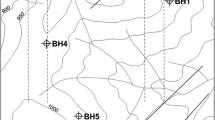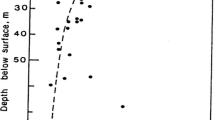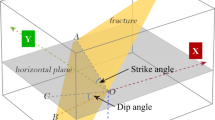Abstract.
This paper outlines the hydraulic characteristics of fractured rock masses and their implication in engineering works. The hydraulic behavior of subsurface fracture systems has been evaluated by means of hydraulic testing using packer tests and by fracture analysis. A comparison of the borehole results with those of surface fracture mapping provides a reasonable correlation between the two methods of measuring fractured rock hydraulic conductivity. The mean hydraulic conductivity value obtained from the boreholes is 36.5 LU (9.26×10–5 m/s), while the mean value of hydraulic conductivity obtained from field mapping of fracture data is in the order of 1×10–5 m/s. Based on the hydraulic conductivity values the sandstone rock mass can be considered medium to highly conductive; nevertheless, it seems to be almost impervious at greater depth. The empirical relationships which have been derived between hydraulic conductivity and both rock quality designation (RQD) and rock mass rating (RMR) indices indicated that the mean value of hydraulic conductivity of the rock mass could be estimated to be in the order of 10–5 m/s, which is confirmed by the packer tests.
Similar content being viewed by others
Author information
Authors and Affiliations
Additional information
Electronic Publication
Rights and permissions
About this article
Cite this article
El-Naqa, A. The hydraulic conductivity of the fractures intersecting Cambrian sandstone rock masses, central Jordan. Env Geol 40, 973–982 (2001). https://doi.org/10.1007/s002540100266
Received:
Accepted:
Issue Date:
DOI: https://doi.org/10.1007/s002540100266




